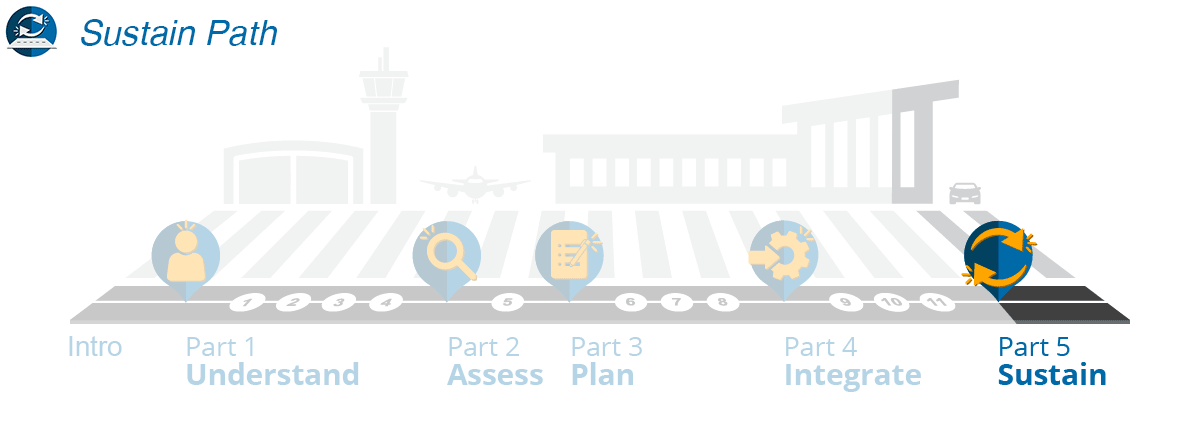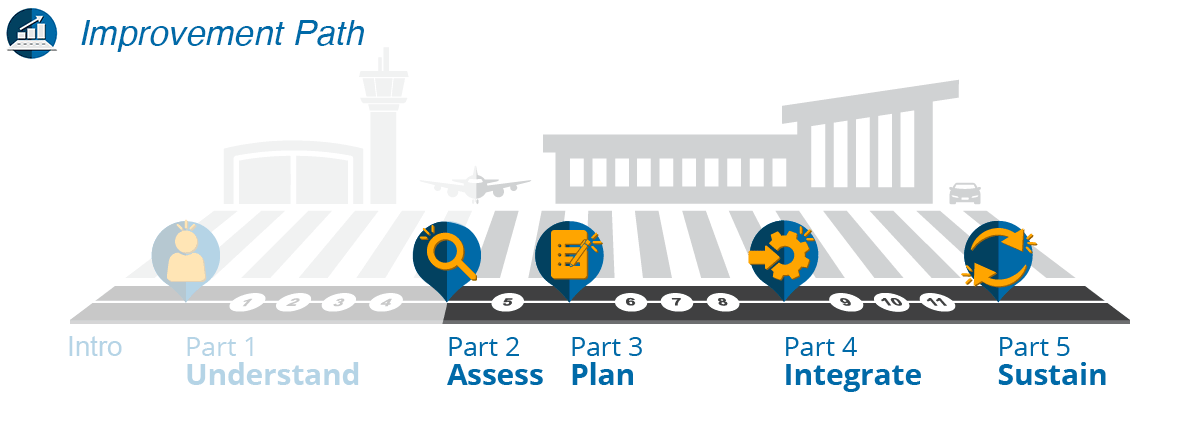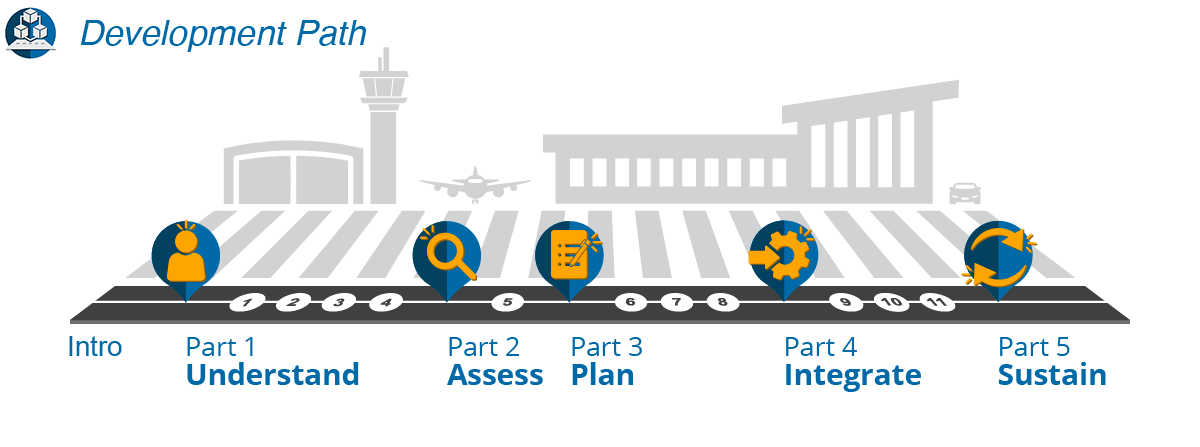Resources
Aviation Industry Examples
The following are some applicable examples of how airports have implemented social media (SM) in emergency management (EM).
Examples Gathered Through Interviews for ACRP Project 04-23
During research for this project, we conducted a number of interviews with airports of varying sizes across the United States. Below are summaries of some of these interviews.
Duluth International Airport | Economic Limitations
The small-hub Duluth International Airport was faced with economic limitations when deciding how to incorporate SM into EM with just one public information officer (PIO). Airport leadership took advantage of cost-effective outsourcing to augment its SM capabilities in the functional area of SM listening. The benefit of a streamlined approach like this is that airport leadership can use an outside vendor to monitor potentially emerging issues. That allows a small airport to have a very lean internal SM staff that can focus on active internal SM messaging with various EM staff from the airport and mutual response agencies as well as public (airport external) SM messaging.
Dallas/Fort Worth International Airport | Community Collaboration
Dallas/Fort Worth Airport has built a strong relationship with PIOs in the surrounding communities. This has enabled information sharing between the groups to identify the potential impact of incidents both on and off the airport.
Minneapolis–St. Paul International Airport | Collaboration
Minneapolis–St. Paul International Airport initially found it challenging to get its SM, PIO, and EM staff to collaboratively use SM in emergency situations. The airport's solution was to integrate the PIO into the EM unified command structure, physically locating the individual near the SM manager in the joint information center (JIC). The airport then conducted JIC training and exercises that enabled the SM, PIO, and EM staff to discover ways to simplify the approval processes for public-facing SM messaging. Training with one another enabled the teams to work through various SM and EM issues together and gain trust in each other.
Southwest Airlines Case Study
The research team conducted an interview with Southwest Airlines regarding its aircraft engine incident and we have prepared a lengthy case study. This case study presents the benefits and challenges of closely integrating SM activities with EM procedures and EM events. It also presents the benefits of close communication and collaboration with airport authorities and other jurisdictions. Finally, this case study takes a brief look at the need for continual SM and communication training. This case study emphasizes the SM and EM collaboration recognized in the catastrophic events during flight 1380 in April 2018. Click here to download this document.
Examples of Public Social Media Publishing and Engagement
Over the course of this project, we kept an eye out for any airport or airline emergency that made headlines. We then reviewed the news articles and public SM channels of the agencies involved and prepared the following short summaries of each. Note that our review of these incidents did not include contacting the entities involved in the incidents to investigate how SM is used for (1) planning/mitigation or recovery, (2) private internal engagement, (3) private external engagement with stakeholders such as airplane passengers or airport customers affected during such emergency events, or (4) reporting. Our analysis is limited to publishing and public engagement.
Albuquerque International Sunport | Incident with a Suicidal Man
In August 2018, at Albuquerque's airport, a man who appeared suicidal after cutting himself with a broken mug caused an hours-long lockdown (https://apnews.com/a6fdecb8d075472d81afd2e4f3ffd4af/Police:-Suicidal-man-causes-lockdown-at-Albuquerque-airport). During the response to this incident, the airport published regular updates to its Twitter profile, including video interviews of police staff who were part of the response efforts. The airport also publicly engaged with users who asked questions in response to the airport's updates.
Orlando International Airport | Man Jumps to His Death
In February 2019, a man jumped to his death at Orlando International Airport (https://www.orlandosentinel.com/news/breaking-news/os-ne-oia-jump-hyatt-hotel-20190202-story.html). During this event, the airport published updates from the incident to its Twitter profile and re-posted SM updates from the Orlando Police Department. Their first update was roughly 12 minutes after the estimated time that the event took place. The airport received positive comments on this level of communication. However, one of their updates received some negative feedback regarding word choice that, with further thought, could have been avoided due to similarities to the nature of the incident.
Orlando International Airport | Man Claiming He Had a Gun
In February 2019, a man claimed he had a gun at Orlando International Airport (https://www.orlandoweekly.com/Blogs/archives/2019/02/16/a-man-detained-in-security-incident-at-orlando-international-airport-causes-massive-panic). During this event, the airport published updates to its Twitter profile and re-posted updates from the Orlando Police Department. They also engaged publicly with concerned users who had questions about the event. The airport was commended by some users for the regular updates. However, other users were not satisfied with even this level of communication.
Examples and Case Studies Noted in Other Publications
The following examples are noted in other publications. We provide a brief description and analysis here.
Boston Marathon Case Studies
During the 2013 Boston Marathon, an event with over 23,000 participants, two explosive devices were detonated during the race. The Boston Police Department served as an example of effective use of SM to communicate with the public and respond to a terrorist incident (https://www.hsdl.org/c/the-boston-marathon-bombings-how-social-media-played-a-role/). This webpage provides links to additional articles on lessons learned from the bombing.
Fort Lauderdale Airport Active Shooter Incident and Post-Event Response
On January 6, 2017, a gunman intentionally opened fire at the Fort Lauderdale Airport wounding six and killing five people. The shooting occurred in the domestic baggage claim. The following document describes the response effort, including SM uses (https://www.policefoundation.org/wp-content/uploads/2017/09/Ft.-Lauderdale-Hollywood-International-Airport-AAR.pdf).
Examples from ACRP Synthesis 82
The following examples are noted in ACRP Synthesis 82: Uses of Social Media to Inform Operational Response and Recovery During an Airport Emergency. We provide a brief description and analysis here. For full descriptions of these events, you can access ACRP Synthesis 82 at http://www.trb.org/Main/Blurbs/176496.aspx.
Minneapolis–St. Paul International Airport | Emergency Operations Center, JIC, and Joint Family Support Operations Center
Since Minneapolis–St. Paul International Airport includes SM in its comprehensive crisis communications plan, it was able to test how SM messaging worked in a combined tabletop and functional exercise. This exercise revealed how the emergency operations center (EOC), JIC, and joint family support operations center (JFSOC) needed to work in concert to send a unified message via SM and all other communications channels.
Edmonton International Airport | Breaking Down Silos
When Edmonton International Airport, considered a medium-sized airport by U.S. standards, expanded its SM program into EM, it made several organizational changes that ultimately broke down silos among public relations, operations, and emergency management.
Southwest Airlines | Active Shooter at Dallas Love Field
During this event, the airline was able to assist law enforcement and the airport, stay abreast of the incident, and provide timely information to customers by using its SM presence.




